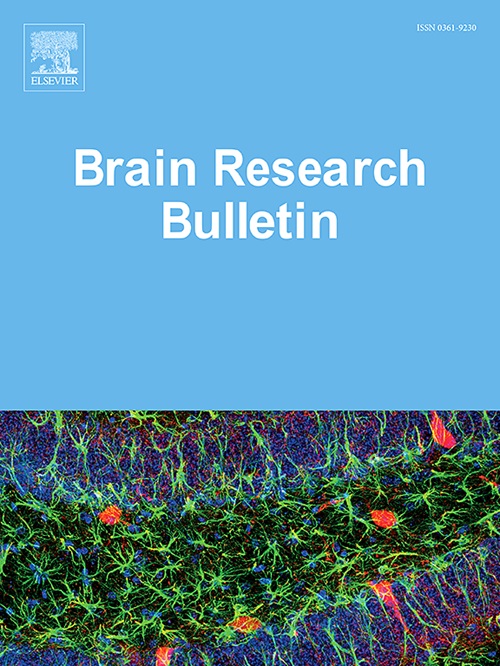Anxiety- and nociception-like behaviours in mature adult mice induced by audiovisual overstimulation during infancy
IF 3.5
3区 医学
Q2 NEUROSCIENCES
引用次数: 0
Abstract
Objectives
To evaluate the behavioural effects in adult mice previously subjected to audiovisual overstimulation during infancy and adolescence.
Methods
Mice aged 21, 26 and 36 days (p21, p26 and p36) underwent auditory (70 db) and visual (flashing lights) stimulation for 2 or 6 h per day until p64; naive animals were used as controls. At p200, tests assessed respectively motor activity (open field test), depression (forced swimming and splash tests), anxiety (hole board, plus maze and marble burying tests, aggression (resident-intruder test), and nociception (von Frey and hot plate tests).
Results
There were no significant (ANOVA, p > 0.05) behavioural changes in forced swimming, splash, hole board, or marble burying tests between overstimulated and naive groups. However, the p21 group showed significantly (ANOVA, p < 0.05) increased anxiety-like behaviour (2 h) in the elevated plus maze test and altered nociceptive behaviour in the von Frey test (2 and 6 h). The p26 group (2 h) displayed significantly reduced rearing behaviours, fewer entries in the plus maze test, and faster reaction times to noxious thermal stimulation (2 h).
Conclusion
Audiovisual overstimulation during early development can promote anxiety-like behaviour and affect nociceptive behaviour in adult mice.
求助全文
约1分钟内获得全文
求助全文
来源期刊

Brain Research Bulletin
医学-神经科学
CiteScore
6.90
自引率
2.60%
发文量
253
审稿时长
67 days
期刊介绍:
The Brain Research Bulletin (BRB) aims to publish novel work that advances our knowledge of molecular and cellular mechanisms that underlie neural network properties associated with behavior, cognition and other brain functions during neurodevelopment and in the adult. Although clinical research is out of the Journal''s scope, the BRB also aims to publish translation research that provides insight into biological mechanisms and processes associated with neurodegeneration mechanisms, neurological diseases and neuropsychiatric disorders. The Journal is especially interested in research using novel methodologies, such as optogenetics, multielectrode array recordings and life imaging in wild-type and genetically-modified animal models, with the goal to advance our understanding of how neurons, glia and networks function in vivo.
 求助内容:
求助内容: 应助结果提醒方式:
应助结果提醒方式:


